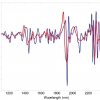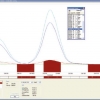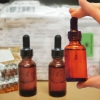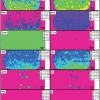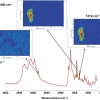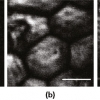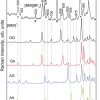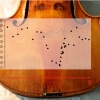In recent editions of SE I have asked searching questions about the evolution of ISO 17025 and the role of accreditation bodies. By chance, I received a copy of an article by Gary Price which suggested that here was someone else who wasn’t convinced by the status quo. I contacted him and found that he is a metrology specialist who has advised Australian governments on the measurement infrastructure requirements of modern chemical measurement. I felt that the readers of this column would enjoy and may like to comment on his views. I asked him to produce the following short review of the arguments presented in the main articles.—Peter Jenks
Articles and Columns
Pages
Information on the detailed chemical composition, structure and morphology of environmental particles, and especially airborne particulate matter (PM), facilitate the understanding of their reactivity, sources, transport and changes of chemical species and, hence, prediction of their likely impact on the environment and human and animal health. The analysis techniques for environmental particles can broadly be divided into two groups: bulk (for example, water-soluble ionic content by means of ion chromatography for PM, elemental concentrations by means of X-ray fluorescence spectrometry for all environmental particles, chemical structural information by means of X-ray diffraction for larger environmental particles, such as sediments and sands etc.) and micro-analytical techniques, whereby the character of any single particle can be probed.
The counterfeiting of medicines is an increasing world wide problem as a great danger to public health. Counterfeit medicines are imitations of their authentic counterparts so that both physical characterisation and chemical analysis are required to discriminate between them. In this respect, near infrared (NIR) spectroscopy is ideally suited to screening for counterfeit medicines because it is non-destructive, fast, requires no sample preparation, and provides a fingerprint of the physical and chemical composition of a product.
This article discusses how modern inductively-coupled plasma (ICP) technology surpasses the performance of traditionally used atomic absorption spectroscopy (AAS) techniques to ensure optimal fuel quality.
Spectroscopy is the measurement of the interaction of radiation with matter before or after spectral dispersion. This has been studied variously by physicists and chemists, has wide applications outside these traditional disciplines and cannot be owned by any particular community. The subject embraces both science (including mathematics) and technology (including computing) and contains many examples of differences, not always understood, between these cultures. It illustrates the unchanging and universal character of the relevant science, which is increasingly revealed by advances in the relevant technology.
Doping control authorities and sports drug testing laboratories are frequently confronted with the illicit use of performance-enhancing therapeutics and therefore various analytical strategies have been developed to detect a misused drug and/or its metabolic product(s) in blood or urine specimens. Besides the administration of clinically approved drugs prohibited in sports, new drug candidates currently undergoing early or advanced clinical trials have also been the subject of investigations concerning their prevalence and abuse by athletes.
Imaging of organic and inorganic constituents of tablets represents a considerable challenge and no single spectroscopic approach can provide definitive characterisation of all components and/or satisfy key measurement criteria such as sensitivity, specificity, resolution and speed of analysis. Laser ablation in combination with ICP emission spectrometry represents a powerful new tool for imaging elemental distribution in pharmaceutical tablets.
We have previously investigated the topographic and quantitative changes in the distribution of trace metals in spinal cords from ALS and control patients. X-ray fluorescence microscopy was used to investigate their metallic nature and distribution in single nerve cells. A deeper understanding of the neurodegenerative processes in ALS requires focus on the biochemical changes occurring in nervous tissue of such a disorder. For this purpose, we have undertaken an infrared microspectroscopy study. While metals are suggested to play a pivotal role in the pathogenesis of ALS, they typically do not occur in tissues as free ions. This results in the presence of the complex mechanisms of metal ions buffering that protect cells against their toxic effects. Metal homeostasis is regulated by several proteins. Such proteins containing metal cofactor are called metalloproteins.
The 33rd meeting of the Reference Material Committee of ISO, ISO/REMCO was held in Hangzhou (China) from 3 to 7 May 2010, and was hosted by the Standardisation Administration of China and the China Association of Standardisation. ISO/REMCO now has a membership of 70 members of the International Organisation for Standardisation (ISO) and liaison with 18 international organisations and seven ISO-internal committees. The new ISO TC liaison introduced at this meeting is with ISO/TC 158 “Analysis of gases”, with Dr Adriaan van der Veen acting as the REMCO liaison officer.
I recently “discovered” a very interesting radio programme on BBC Radio 4. It is “devoted to the powerful, sometimes beautiful, often abused but ever ubiquitous world of numbers”. A few weeks ago we were asked to say what we were doing while listening to the programme. The next week we were told that nearly 2000 e-mails had been received and this data had been given to information designer David McCandless to turn into a graphic. When this was trailed I got the impression that something new and exciting was going to be displayed and I thought that the graphic would include sound. The graphic is good but rather “ordinary” and I was disappointed. This got me thinking about how we display information. Have we made any advance in the last 25 years? Could sound be used!
Selected ion flow tube mass spectrometry, SIFT-MS; new horizons in real time air and breath analysis
We conceive selected ion flow tube mass spectrometry, SIFT-MS, primarily as a real-time, absolute, analytical technique that can meet the challenge of the immediate analysis of humid exhaled breath for rapid clinical diagnosis and therapeutic monitoring. This objective has certainly been achieved and the application of SIFT-MS has quickly been expanded into many other areas where real time, immediate analyses of trace compounds in air are desired, as we have demonstrated in recent reviews and which we summarise at the end of this article.
Analytical Information Mark-up Language, better known as AnIML, has been around as a concept for a number of years, but how does an analytical chemist use it in the real lab? A team of R&D scientists at LGC has been finding out.
ISO Standard ISO 17025 is the cornerstone of the “Measured Once, Trusted Everywhere” concept and the accreditation of labs and testing establishment to ISO 17025 by accreditation bodies underpins the credibility. ISO 17025 is all about facilitating the free movement of goods and services and so helps to eliminate monopolies, cartels and all sorts of anti-competitive activities.
Non-destructive, high resolution, sediment core scanners incorporating X-ray fluorescence (XRF) spectrometry are now widely used by sub-disciplines in the earth and environmental sciences and have revolutionised the analysis of sediment cores. These powerful instruments allow the cores to be analysed rapidly with virtually no sample preparation. They can record along-core variations for many elements in the Periodic Table from Al to U and detection limits down to a few ppm can be achieved in favourable conditions depending on the acquisition dwell time.
Here, we focus on new trends in Raman spectroscopy to improve in vivo diagnosis. The use of Raman spectroscopy for real-time diagnosis of medical disease without the need for biopsy is among the most exciting and clinically relevant applications; four recent reports are presented. First, an approach to reduce fluorescent background of lung tissue in combination with a biomedical filtered Raman fibre optic probe was introduced in 2009 by Magee et al. Second, a fibre optic probe was developed for the CARS variant of Raman spectroscopy. Third, functional metal nanoparticles and carbon nanotubes were applied to a small animal model to collect Raman spectra non-invasively utilising the surface enhanced Raman scattering (SERS) effect. Finally, spatially offset Raman spectroscopy (SORS) has been presented as another non-invasive Raman-based method to probe deep bone subcutaneously in an animal model.
The problem of detecting, recognising and identifying explosives at significant standoff distances has proved one of the most difficult—and most important—challenges during recent years, being today, one of the most demanding applications of spectroscopic techniques. The limited number of sophisticated available techniques potentially capable of standoff detection of minimal amounts of explosives is based on laser spectroscopy. Of the recently developed techniques, Raman spectroscopy and laser-induced breakdown spectroscopy (LIBS) are considered significant for their potential for homeland defence applications.
Continuing the series of articles on spectroscopy, we return principally to the UV-visible area of the spectrum, but this time to the science of luminescence (fluorescence and phosphorimetry), in all its many forms. Given the diversity of the application areas and instrument types available, in such an article we can only briefly give an overview of the topic and interested parties are, therefore, recommended to follow-up the listed references for more in-depth discussion on the points raised.
<p>In last year’s <a href="https://www.spectroscopyeurope.com/td-column/and-now-something-completel...">August/September</a> issue of <em>Spectroscopy Europe</em> I wrote a column about my “discovery” of computational chemistry and asked if anyone was interested. A satisfying number of readers answered the on-line survey with very positive comments but none more so than Patrik Johansson who e-mailed me about his delight with the column and to assure me that there was “indeed a bunch of scientists out there that do work on IR (and Raman) using both experimental and computational techniques—I am one of them”! This column is the first result of the ensuing e-mail conversation and is due to Patrik. I remain excited by the possibilities of computational chemistry particularly as Patrik thinks that an approach to NIR spectroscopy is indeed possible.
ISO 17025 has been with us now for 12 years and in some industry sectors it is getting hard to find a commercial laboratory offering chemical testing that is not accredited to ISO 17025 for some or all of its scope. In just 12 short years the importance of “quality management” to a laboratory has undergone a seismic shift.
A look back: where did ISO 17025 come from?
For the past two centuries, the nature of the varnishes coating historical instruments has been a much debated subject. Focusing in particular on the varnishes used for coating violins made by the Italian instrument-maker Antonio Stradivari, numerous hypotheses have been raised by instrument-makers, experts, musicians and chemists, without reaching a general understanding of the ancient varnishing techniques. A few years ago, we decided to work on this topic using several complementary approaches for materials characterisation and study of historical sources (ancient varnish recipes, etc.).


